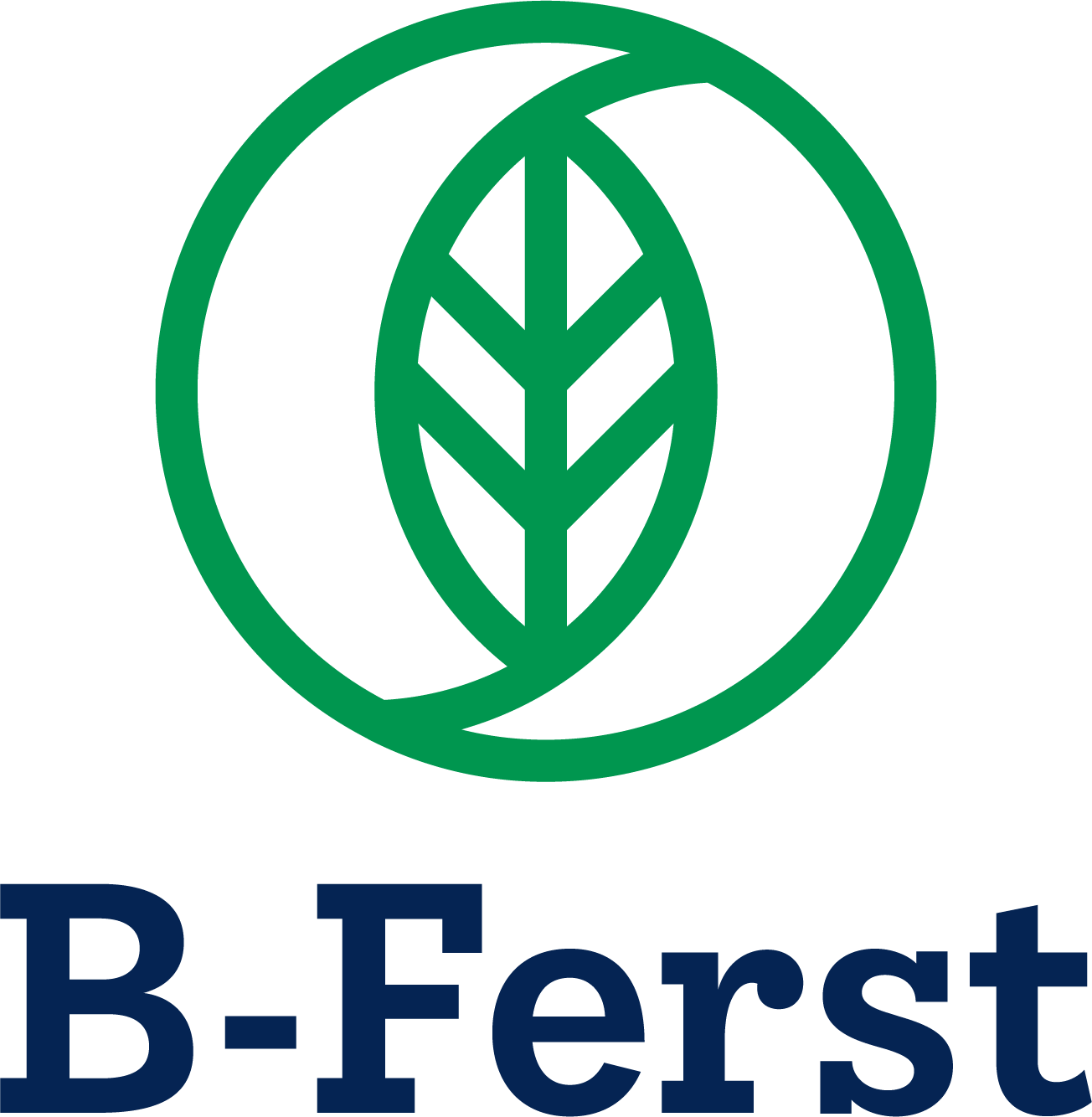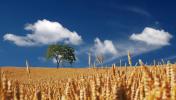
H2020 B-FERST Project: Bio-based fertilizer products as a best practice for agricultural management Sustainability
- Type Project
- Status Signed
- Execution 2019 -2024
- Assigned Budget 6.787.075,75 €
- Scope Europeo
- Main source of financing Horizon 2020
- Project website B-FERST
Increasing land productivity sustainably is the main current challenge for the agricultural sector. The EU-funded B-FOREST project proposes an integrated bio-waste valorization system in agricultural management. The project is introducing a more sustainable resource management solution through tailored nutrient dosing adapted to farmers' systems. A central element of the effort to reverse soil nutrient loss is the repurposing of bio-waste to replace non-renewable, non-domestic, and energy-intensive feedstocks. B-FERST aims to shift the market adoption of fertilizers in intensive agriculture, as well as reduce the carbon footprint of fertilizer production by at least 10%, thereby minimizing its environmental impact.
The project began in 2019, coordinated by FERTIBERIA, a leading company in the production of agricultural fertilizers and industrial chemicals. The remaining consortium is made up of eleven European partners: the University of León, FCC Aqualia and Agrisat (Spain), Novamont and Fondazione iCons (Italy), FKUR KUNSTSTOFF (Germany), Vito and Arcadia (Belgium), AG Futura Technologies (North Macedonia), and Instytut Uprawy Nawozenia i Gleboznawstwa (Poland).
The nutrient recovery process for obtaining phosphate salts from ash has been validated. The specific combination of recycled nutrients used to form the eight improved bio-based fertilizers designed has been technically demonstrated on a pilot scale. These products were applied in agronomic field trials. This will help ultimately validate these promising bio-based fertilizers and additives.
A mapping of potential raw material sources has been conducted in eight European countries. Samples have been requested from these countries for analysis. As a result of the analysis, unsuitable sources of materials have been identified, enabling a more targeted search and serving as the basis for developing the final logistics model.
The use of microbial plant biostimulants (MPBs) and non-microbial plant biostimulants (NMBs) reduces fertilizer use because plant and soil mechanisms improve nutrient availability. Results so far indicate that fertilizers made from bio-based materials could include a lower percentage of water-soluble nutrients than conventional commercial fertilizers. New NMBs (from thistle meal) and MPBs, as well as biodegradable waxes, have been developed and selected for demonstration-scale application. Their optimized physical and chemical properties have been the basis for equipment development in demonstration plants.
Furthermore, the use of biopolymers could reduce the release time of nutrients in fertilizers and protect the BMP applied to the fertilizer surface. In this regard, all the selected coatings are biodegradable.
The basic and detailed engineering packages for the nutrient extraction demonstration plant and the coatings demonstration plant have already been developed.
The initial objective of optimizing the business model, based on the characteristics of the fertilizer market and industry, focusing on three market segments (EU-28, Western Balkans, and New Independent States), is slightly adapted to the current information provided by the secondary analysis.
Regarding the legislation on these new fertilizers, the new Regulation (EU 2019/1009) of the European Parliament and of the Council of 5 June 2019 laying down rules for the placing on the market of EU fertilizer products includes new provisions aimed at harmonizing the conditions for the marketing of fertilizer products in the internal market.
The environmental impact of production (cradle-to-gate, per ton of fertilizer produced with a 10-10-10 NPK composition) for all B-Ferst fertilizers and the conventional fertilizer has been determined in a preliminary assessment. Preliminary results show carbon footprint reductions (compared to conventional fertilizer) ranging from approximately 8% to 40%, depending on the fertilizer. Regarding social LCA, an important component of defining the objective and scope of a social LCA is the materiality assessment.
Sustainable agriculture meets the needs of today's society without compromising the ability of future generations to meet their own needs. Agricultural stakeholders should seek to integrate key priorities into their regular activities: a healthy environment; economic profitability; social engagement; and cost-effective products. All of this entails overcoming the challenges identified by the Bioeconomy Strategy to achieve productivity increases, while ensuring a sustainable resource and alleviating pressure on the environment. In line with these priorities, through the European Circular Economy Package, the EU aims to promote sustainability by achieving new and improved European sources of biomass and sustainable supply chains by improving the relationship between farmers and bio-based industries. A new approach to addressing this challenge must involve the creation of green value chains to improve overall sustainability, while optimizing the links between stakeholders in agriculture and other industries.
To this end, the fertilizer industry plays a role as a supplier of renewable nutrients. Specialized nutrients must be supplied with customized dosages tailored to the farmer's needs. Furthermore, the fertilizer industry is a relevant stakeholder, with the necessary infrastructure to ensure the mobilization of underutilized and unused flows from the agricultural sector and other industries. Therefore, both stakeholders play an essential role in the sustainable agricultural management strategy.
The main objective of B-FERST is to integrate bio-waste valorization into agricultural management plans by creating new circular and bio-based value chains from bio-waste, municipal waste management, agri-food industries to the fertilizer value chain, considering a bilateral interaction between the agricultural and fertilizer sectors.
The main objective of B-FERST is to integrate bio-waste valorization into agricultural management plans by creating new circular and bio-based value chains, considering a bilateral interaction between the agricultural and fertilizer sectors focused on a paradigm shift in the fertilizer value chain with 8 specialized fertilizers.
Specialized nutrient blends are required to achieve more sustainable resource management through nutrient dosing tailored to farmers' systems. B-FERST's sustainability is based on the reuse of biowaste to replace non-renewable, non-domestic, and energy-intensive raw materials:
1) Bio-based solid fertilizers including renewable sources of macronutrients (N,P,K) obtained from 3 by-product streams: i) ash, as a source of P&K from: Wastewater Treatment Plants (WWTPs) (sewage sludge), and agri-food such as: slaughterhouse, olive and livestock waste; ii) struvite as a source of P and N from WWTPs and agricultural waste (pig slurry), and; iii) compost as a source of organic carbon compound, N, P and K from the organic fraction of municipal solid waste, OFMSW, WWTP and agricultural waste (manure -cattle-).
2) Biostimulants for improving soil nutrients from two approaches: microbiological strains selected as microbial plant biostimulant (MPB) or non-microbial plant biostimulant (NMPB) from the processing of thistle oil meal (agricultural by-products) and compost extracts.
Biodegradable coatings based on biopolymers will be used when adding MPB to fertilizer products to protect beneficial microorganisms and ensure their performance.
The FEASIBILITY is based on previous R&D from other RIA projects. The manufacturing process will be demonstrated on an industrial scale. Specialized fertilizers will then be developed and validated in five crop trials (Spain, Italy, France, Poland, and Ukraine), comparing their performance with that of traditional fertilizers in terms of sustainable sourcing, logistics, soil, and growing conditions, achieving a TRL of 6.
The novel Nutrient Recovery Process has been optimized with ash from WWTPs included in the database. The necessary documentation (engineering packages) has been completed for its implementation on a demonstration scale. Bio-based materials from different sources, with different chemical and physical properties and proportions have been incorporated into the pilot plant fertilization process, both in the granulation and coating stages. These prototypes constitute a new family of bio-based fertilizers with bio-based raw materials and bio-based coatings (biostimulants and biowaxes).
An oilseed crushing plant has been tested, optimizing process conditions at the tonne scale, achieving an oilcake recovery of approximately 96–99% with very low losses. An innovative reactor has been designed and built to produce biostimulant mixtures (NMBP). Tests have revealed optimal reproducibility from the pilot to the demonstration scale.
B-FERST will create new cross-sectoral interconnections between the different sectors and stakeholders involved in the entire value chain: Agri-food industry – Fertilizer manufacturer, Fertilizer manufacturer – Farmers, Biostimulant producer (BPP) – Fertilizer manufacturer, WWTP – Fertilizer manufacturer, OWPP – Fertilizer manufacturer, Plastics industry – Fertilizer manufacturer, ICT sector – Farmer / Fertilizer manufacturer.
The B-FERST project proposes the creation of at least three new bio-based value chains by integrating technologies and creating additional interconnections and synergies between traditional agricultural stakeholders and new ones with other industries (e.g., WWTPs or OWPPs). The new fertilizer products will ensure and maintain the sustainability of the soil-plant system, while being environmentally friendly and free of adverse public health issues and complying with current and proposed regulations and standards. Furthermore, they will be economically viable. B-FERST will conduct a detailed consequential LCA, taking these effects into account. Furthermore, this LCA will analyze the full life cycle of the fertilizers, taking into account differences in field performance.
- FERTIBERIA CORPORATE SL







